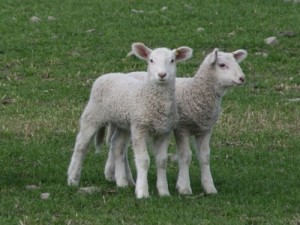Move over ham, here comes lamb
It’s official, lamb will take centre stage on Kiwi Christmas tables this year.
 Beef + Lamb NZ estimates 23.9 million lambs were tailed this spring – the smallest lamb crop since 1953.
Beef + Lamb NZ estimates 23.9 million lambs were tailed this spring – the smallest lamb crop since 1953.
Beef + Lamb NZ estimates 23.9 million lambs were tailed this spring – the smallest lamb crop since 1953.
Lamb export receipts for 2015-16 are estimated at $2.8 billion, down 4.2% on 2014-15.
B+LNZ Economic Service chief economist Andrew Burtt says the tally reflects three key influences.
"Breeding ewe numbers were down 4.5% on last year, due to carry over effects of dry conditions in past seasons," he says. "Lambing percentages across most of the country were down, as a result of tight feed supplies leading into winter. And fewer hoggets were mated."
In some regions, there was also a slight swing towards increasing beef cattle, at the expense of sheep.
"On the positive side of the ledger, better-than-average climatic conditions during lambing this spring meant lamb survival was good, the exception being isolated weather events in the North Island."
Over the country, there was a 6.7% drop – or 1.7 million fewer lambs than last year; 11.3 million lambs were tailed in the North Island – down 0.7 million on last year but similar to 2013's tally. In the South Island, 12.6 million lambs were tailed – 1 million fewer than last spring, due to decreased ewe numbers, lower lambing percentages and fewer lambing hoggets.
Burtt says the average carcase weight is expected to increase slightly – by 0.9% – to 18.3kg, as a result of lower stocking rates per hectare. "However, this is not sufficient to offset the reduced number of lambs available and we expect total export lamb production to drop by 7.2%."
The lamb crop survey covers 500 commercial sheep and beef farms, which are statistically representative of New Zealand's commercial sheep and beef farms.
The National Wild Goat Hunting Competition has removed 33,418 wild goats over the past three years.
New Zealand needs a new healthcare model to address rising rates of obesity in rural communities, with the current system leaving many patients unable to access effective treatment or long-term support, warn GPs.
Southland farmers are being urged to put safety first, following a spike in tip offs about risky handling of wind-damaged trees
Third-generation Ashburton dairy farmers TJ and Mark Stewart are no strangers to adapting and evolving.
When American retail giant Cosco came to audit Open Country Dairy’s new butter plant at the Waharoa site and give the green light to supply their American stores, they allowed themselves a week for the exercise.
Fonterra chair Peter McBride says the divestment of Mainland Group is their last significant asset sale and signals the end of structural changes.